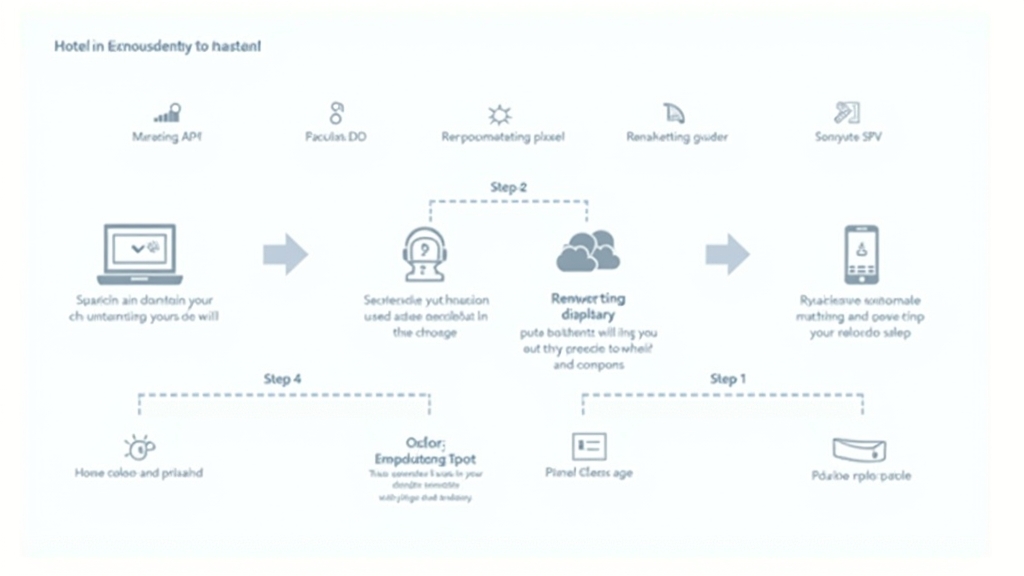A Comprehensive Guide to Marketing: Remarketing Pixel Setup
Introduction to Remarketing and Its Importance in Marketing
Remarketing is a powerful tool that helps businesses reconnect with potential customers who have previously interacted with their website. By using remarketing pixels, you can track user behavior and serve targeted ads to remind them of your products or services. This strategy not only increases brand visibility but also boosts conversion rates by encouraging users to return and complete their purchases. In this guide, you’ll learn about the setup of remarketing pixels, best practices for campaigns, and how to analyze your efforts effectively.
What is Remarketing?
Remarketing refers to the practice of targeting ads to users who have already visited your website or engaged with your content. It allows you to re-engage these visitors by displaying relevant ads as they browse other sites online. For example, if someone looked at shoes on your site but didn’t buy them, they might see those same shoes advertised on social media later. This keeps your brand fresh in their minds and encourages them to come back.
Why Use Remarketing Pixels?
Remarketing pixels are snippets of code placed on your website that collect data about visitors’ actions. These pixels help create custom audiences based on user behavior, allowing you to tailor ads specifically for different segments of your audience. Using remarketing pixels can significantly enhance the effectiveness of your advertising campaigns by ensuring that you’re reaching people who are already familiar with what you offer.
Understanding the Basics of Remarketing Pixels
How Remarketing Pixels Work
When a visitor lands on your website, the remarketing pixel tracks their activity—like pages viewed or products added to a cart—and stores this information in cookies. Later, when they visit other websites within the ad network (like Google Display Network), these cookies allow advertisers like you to show targeted ads based on previous interactions.
Key Components of a Remarketing Pixel
A typical remarketing pixel consists of three main components:
- The Code Snippet: This is JavaScript code provided by platforms like Google Ads or Facebook Ads.
- Cookies: These small files store user data and preferences.
- Audience Lists: Groups created based on specific behaviors (e.g., users who abandoned carts) which determine whom you will target with ads.
Steps to Set Up a Remarketing Pixel
Choosing the Right Platform for Your Pixel
Before setting up a remarketing pixel, decide which advertising platform fits best for your business goals—Google Ads is popular due to its extensive reach across various websites while Facebook Ads excels in social media engagement.
Creating Your First Remarketing Pixel
Once you’ve chosen a platform:
- Log into your account.
- Navigate to the ‘Audience’ section.
- Select ‘Create Audience’ and choose ‘Website Visitors.’
- Follow prompts to generate the pixel code specific for tracking visitors from your site.
Installing the Pixel on Your Website
To install:
- Copy the generated pixel code.
- Paste it into every page’s header section before closing .
- Test it using tools provided by platforms like Google Tag Assistant or Facebook’s Pixel Helper.
Best Practices for Effective Remarketing Campaigns
Segmentation Strategies for Target Audiences
Segmenting audiences enhances targeting precision:
- Create lists based on user actions (e.g., product views vs cart abandoners).
- Tailor messages according to interests; this makes ads more relevant and engaging.
Crafting Compelling Ad Copy and Visuals
Your ad copy should be clear and enticing:
- Use strong calls-to-action (CTAs) such as “Shop Now” or “Get 20% Off.”
- Incorporate eye-catching visuals that resonate with previous interactions; this familiarity can drive clicks back to your site.
Tracking and Analyzing Your Remarketing Efforts
Tools for Monitoring Performance and Engagement
Utilize analytics tools offered by advertising platforms:
- Google Analytics provides insights into traffic sources.
- Facebook Insights shows engagement metrics related directly from social media campaigns.
Key Metrics to Evaluate Success
Focus on metrics such as click-through rates (CTR), conversion rates, and return on ad spend (ROAS). High CTR indicates effective targeting while good conversion rates suggest successful messaging strategies.
Common Challenges in Setting Up Remarketing Pixels
Troubleshooting Installation Issues
Installation problems may arise if:
- The pixel code isn’t correctly placed.
- There are conflicts with other scripts running on the page.
Use debugging tools mentioned earlier for quick fixes!
Overcoming Audience Fatigue
To prevent audience fatigue where users become tired of seeing repeated ads:
- Rotate creatives regularly; introduce new visuals or offers frequently.
- Adjust frequency caps so users don’t see too many impressions over short periods.
Future Trends in Remarketing and Digital Advertising
Emerging Technologies Impacting Remarketing
Technologies like artificial intelligence (AI) are changing how we approach marketing strategies through predictive analytics—helping identify future customer behaviors based on past actions more accurately than ever before!
Predictions for the Evolution of Consumer Behavior
As consumers become savvier online shoppers seeking personalized experiences, marketers must adapt quickly! Expect increased demand for tailored content delivered via multiple channels simultaneously—making integration essential moving forward!
Conclusion: Maximizing ROI with Effective Remarketing Pixel Strategies
In conclusion, setting up remarketing pixels is vital for enhancing customer engagement after initial visits! By following best practices outlined here—from segmentation strategies through performance analysis—you can maximize ROI effectively while keeping potential customers interested long-term!
📢 Explore More: Continue Your Journey!
If this article helped you understand remarketing better, check out The Ultimate Guide To Digital Advertising! It covers essential insights into digital marketing trends helping you navigate today’s fast-paced advertising landscape more effectively.














![NEEWER 55W 18"/45cm Ring Light Kit [New Version], 5600K Dimmable ...](https://m.media-amazon.com/images/I/414QLqvZWLL.jpg)








